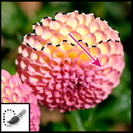You can perform calculations and logical comparisons in a table by using formulas. The Formula command is found on the Table Tools Layout tab, in the Data group.

A formula in Word automatically updates when you open the document
that contains the formula. You can also update a formula result
manually.
Insert a formula in a table cell
- Select the table cell where you want your result. If the cell is not empty, delete its contents.
- On the Table Tools Layout tab, in the Data group, click Formula.
- Use the Formula dialog box to create your formula. You can type in the Formula box, select a number format from the Number Format list, and paste in functions and bookmarks using the Paste Function and Paste Bookmark lists.
Lock or unlock a formula
You can lock a formula to prevent updates to its result. You can also unlock a locked formula.
- Do one of the following:
- Lock a formula Select the formula and then press CTRL+F11.
- Unlock a locked formula Select the formula and then press CTRL+SHIFT+F11.
Examples: Sum numbers in a table by using positional arguments
You can use positional arguments (LEFT, RIGHT, ABOVE, BELOW) with these functions:
- AVERAGE
- COUNT
- MAX
- MIN
- PRODUCT
- SUM
As an example, consider the following procedure for adding numbers by using the SUM function and positional arguments.
Important To avoid an error while summing
in a table by using positional arguments, type a zero (0) in any empty
cell that will be included in the calculation.
- Select the table cell where you want your result. If the cell is not empty, delete its contents.
- On the Table Tools Layout tab, in the Data group, click Formula.
- In the Formula dialog box, do one of the following:
| To add the numbers… |
Type this in the Formula box |
| Above the cell |
=SUM(ABOVE) |
| Below the cell |
=SUM(BELOW) |
| Above and below the cell |
=SUM(ABOVE,BELOW) |
| Left of the cell |
=SUM(LEFT) |
| Right of the cell |
=SUM(RIGHT) |
| Left and right of the cell |
=SUM(LEFT,RIGHT) |
| Left of and above the cell |
=SUM(LEFT,ABOVE) |
| Right of and above the cell |
=SUM(RIGHT,ABOVE) |
| Left of and below the cell |
=SUM(LEFT,BELOW) |
| Right of and below the cell |
=SUM(RIGHT,BELOW) |
- Click OK.
Available functions
Note Formulas that use positional arguments (e.g., LEFT) do not include values in header rows.
The following functions are available for use in Word table formulas:
| Function |
What it does |
Example |
Returns |
| ABS() |
Calculates the absolute value of the value inside the parentheses |
=ABS(-22) |
22 |
| AND() |
Evaluates whether the arguments inside the parentheses are all TRUE. |
=AND(SUM(LEFT)<10,SUM(ABOVE)>=5) |
1, if the sum of the values to the left of the formula (in the same row) is less than 10 and
the sum of the values above the formula (in the same column, excluding
any header cell) is greater than or equal to 5; 0 otherwise. |
| AVERAGE() |
Calculates the average of items identified inside the parentheses. |
=AVERAGE(RIGHT) |
The average of all values to the right of the formula cell, in the same row. |
| COUNT() |
Calculates the count of items identified inside the parentheses. |
=COUNT(LEFT) |
The number of values to the left of the formula cell, in the same row. |
| DEFINED() |
Evaluates whether the argument inside the parentheses is
defined. Returns 1 if the argument has been defined and evaluates
without error, 0 if the argument has not been defined or returns an
error. |
=DEFINED(gross_income) |
1, if gross_income has been defined and evaluates without error; 0 otherwise. |
| FALSE |
Takes no arguments. Always returns 0. |
=FALSE |
0 |
| IF() |
Evaluates the first argument. Returns the second argument if
the first argument is true; returns the third argument if the first
argument is false.
Note Requires exactly three arguments. |
=IF(SUM(LEFT)>=10,10,0) |
10, if the sum of values to the left of the formula is at least 10; 0 otherwise. |
| INT() |
Rounds the value inside the parentheses down to the nearest integer. |
=INT(5.67) |
5 |
| MAX() |
Returns the maximum value of the items identified inside the parentheses. |
=MAX(ABOVE) |
The maximum value found in the cells above the formula (excluding any header rows). |
| MIN() |
Returns the minimum value of the items identified inside the parentheses. |
=MIN(ABOVE) |
The minimum value found in the cells above the formula (excluding any header rows). |
| MOD() |
Takes two arguments (must be numbers or evaluate to numbers).
Returns the remainder after the second argument is divided by the first.
If the remainder is 0 (zero), returns 0.0 |
=MOD(4,2) |
0.0 |
| NOT() |
Takes one argument. Evaluates whether the argument is true.
Returns 0 if the argument is true, 1 if the argument is false. Mostly
used inside an IF formula. |
=NOT(1=1) |
0 |
| OR() |
Takes two arguments. If either is true, returns 1. If both are false, returns 0. Mostly used inside an IF formula. |
=OR(1=1,1=5) |
1 |
| PRODUCT() |
Calculates the product of items identified inside the parentheses. |
=PRODUCT(LEFT) |
The product of multiplying all the values found in the cells to the left of the formula. |
| ROUND() |
Takes two arguments (first argument must be a number or
evaluate to a number; second argument must be an integer or evaluate to
an integer). Rounds the first argument to the number of digits specified
by the second argument. If the second argument is greater than zero
(0), first argument is rounded down to the specified number of digits.
If second argument is zero (0), first argument is rounded down to the
nearest integer. If second argument is negative, first argument is
rounded down to the left of the decimal. |
=ROUND(123.456, 2)
=ROUND(123.456, 0)
=ROUND(123.456, -2) |
123.46
123
100 |
| SIGN() |
Takes one argument that must either be a number or evaluate to
a number. Evaluates whether the item identified inside the parentheses
if greater than, equal to, or less than zero (0). Returns 1 if greater
than zero, 0 if zero, -1 if less than zero. |
=SIGN(-11) |
-1 |
| SUM() |
Calculates the sum of items identified inside the parentheses. |
=SUM(RIGHT) |
The sum of the values of the cells to the right of the formula. |
| TRUE() |
Takes one argument. Evaluates whether the argument is true.
Returns 1 if the argument is true, 0 if the argument is false. Mostly
used inside an IF formula. |
=TRUE(1=0) |
0 |
Use bookmarknames or cell references in a formula
You can refer to a bookmarked cell by using its bookmarkname in a
formula. For example, if you have bookmarked a cell that contains or
evaluates to a number with the bookmarkname
gross_income, the formula =ROUND(
gross_income,0) rounds the value of that cell down to the nearest integer.
You can also use column and row references in a formula. There are two reference styles: RnCn and A1.
Note The cell that contains the formula is
not included in a calculation that uses a reference. If the cell is
part of the reference, it is ignored.
RnCn references
You can refer to a table row, column, or cell in a formula by using
the RnCn reference convention. In this convention, Rn refers to the nth
row, and Cn refers to the nth column. For example, R1C2 refers to the
cell that is in first row and the second column. The following table
contains examples of this reference style.
| To refer to… |
…use this reference style |
| An entire column |
Cn |
| An entire row |
Rn |
| A specific cell |
RnCn |
| The row that contains the formula |
R |
| The column that contains the formula |
C |
| All the cells between two specified cells |
RnCn:RnCn |
| A cell in a bookmarked table |
Bookmarkname RnCn |
| A range of cells in a bookmarked table |
Bookmarkname RnCn:RnCn |
A1 references
You can refer to a cell, a set of cells, or a range of cells by using
the A1 reference convention. In this convention, the letter refers to
the cell’s column and the number refers to the cell’s row. The first
column in a table is column A; the first row is row 1. The following
table contains examples of this reference style.
| To refer to… |
…use this reference |
| The cell in the first column and the second row |
A2 |
| The first two cells in the first row |
A1,B1 |
| All the cells in the first column and the first two cells in the second column |
A1:B2 |
This Article is not the main Article of this page. This Article was took from
http://office.microsoft.com/en-us/word-help/use-a-formula-in-a-word-table-HA102329800.aspx





























































